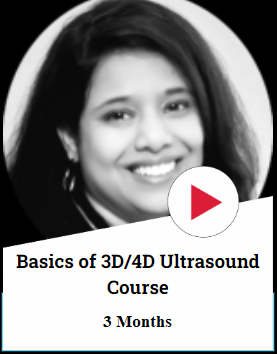The parasternal short-axis view is a cross-sectional view of the heart and can be obtained through echocardiography. The short axis view is also known as the plane perpendicular view of the long axis of the heart. Here the transducer is the real game, placing the transducer just right gives the view required, in this case, the Aortic valve level view. To change the view from parasternal long-axis view to short-axis view the transducer should be rotated 90 degrees in the clockwise direction, with rotation and placing the transducer at different angles we can obtain various short-axis views as shown below.
Different parasternal short axis views
The right way as mentioned before is by rotating the transducer clockwise and angling the transducer at 90 degrees placing the beam perpendicular to the long axis. By facing the transducer marker towards the left shoulder we can get the three levels of view of the heart, one of those views are the aortic valve level view (as shown in the below image). Aortic valve level is obtained when the transducer is tilted a little upward-looking towards the right shoulder.
Why is the parasternal short-axis view at the aortic valve level done? The reason is this allows a 2D evaluation of the aortic valve, tricuspid valve, pulmonic valve, right ventricular function, and identification of the cusps of the aortic valve. The aortic valve level parasternal short axis view also helps get the live image of the 3-cusp structure, right coronary cusp, left coronary cusp, and non-coronary cusp. This view is used to measure the aortic valve area and the origin of coronary arteries. Parasternal short-axis view at aortic valve level also helps classify the ventricular septal defects.
Various imaging techniques are used to develop live images, detect heart defects and plan the next stages of treatment. Imaging techniques like colour flow doppler, continuous wave doppler, spectral doppler are used to evaluate tricuspid valve, pulmonic valve, right-sided cardiac output, right ventricular outflow, anterior pericardium, systolic right atrial collapse, diastolic right ventricular collapse, and cardiac tamponade.
You can learn echocardiography and other latest imaging techniques that are required to know the skills and tips from Onelearninghealthcare.com. These techniques and tips help improve patient care, in times of emergency and post-surgery care if needed. Learning the techniques and tips to Ultrasound imaging can also help advance in the medical career and step ahead. Check onelearninghealthcare.com to know more and get started with the course.
References –
- https://www.123sonography.com/ebook/parasternal-short-axis-views
- https://www.renalfellow.org/2019/07/22/focused-cardiac-ultrasound-for-the-nephrologist-the-parasternal-short-axis-view/
- https://e-echocardiography.com/page/page.php?UID=1429484742
- https://www.jss.org/english/standard/standardization_ca/parasternal_short_axis_view.html














